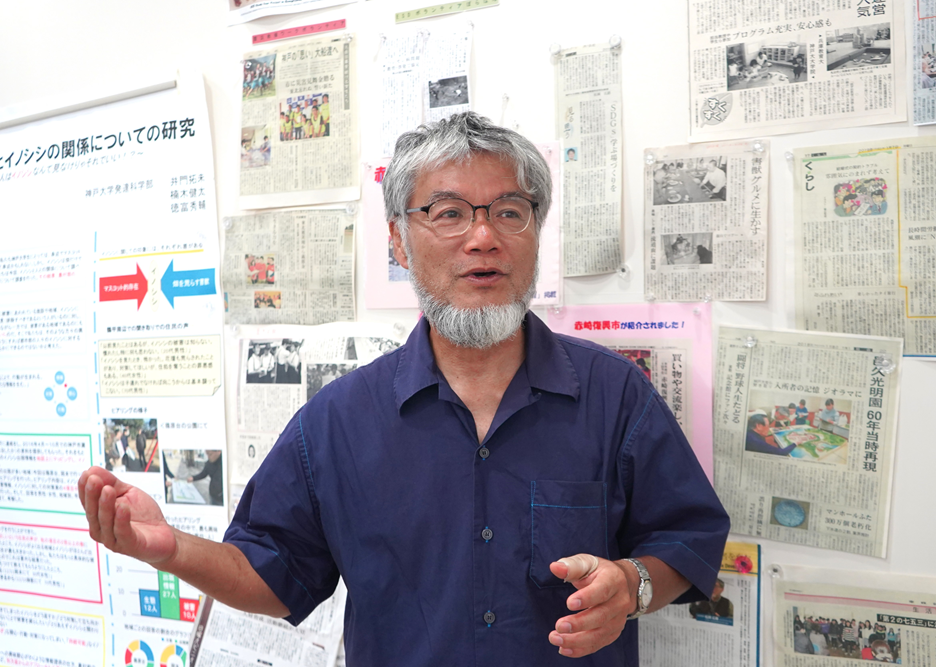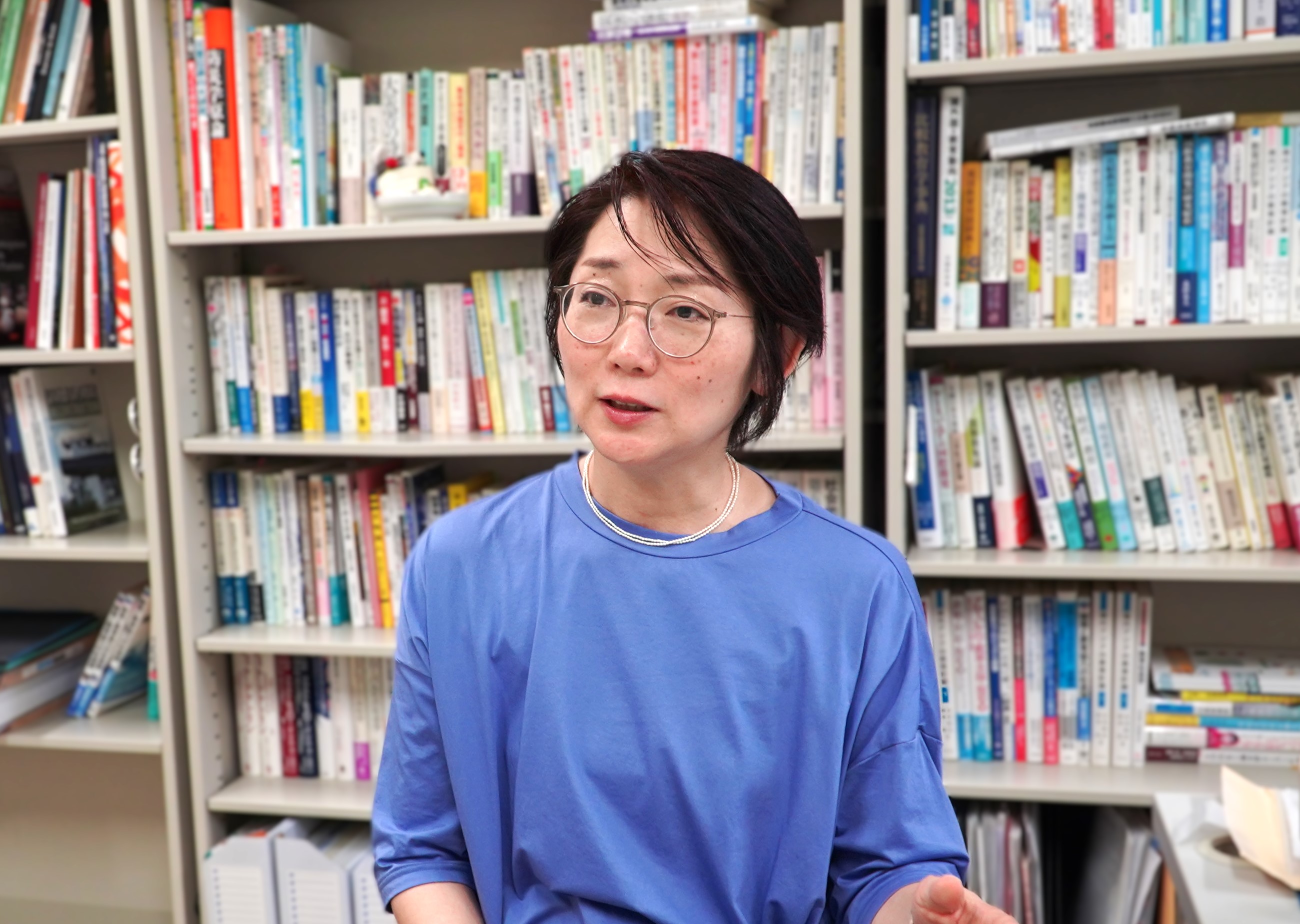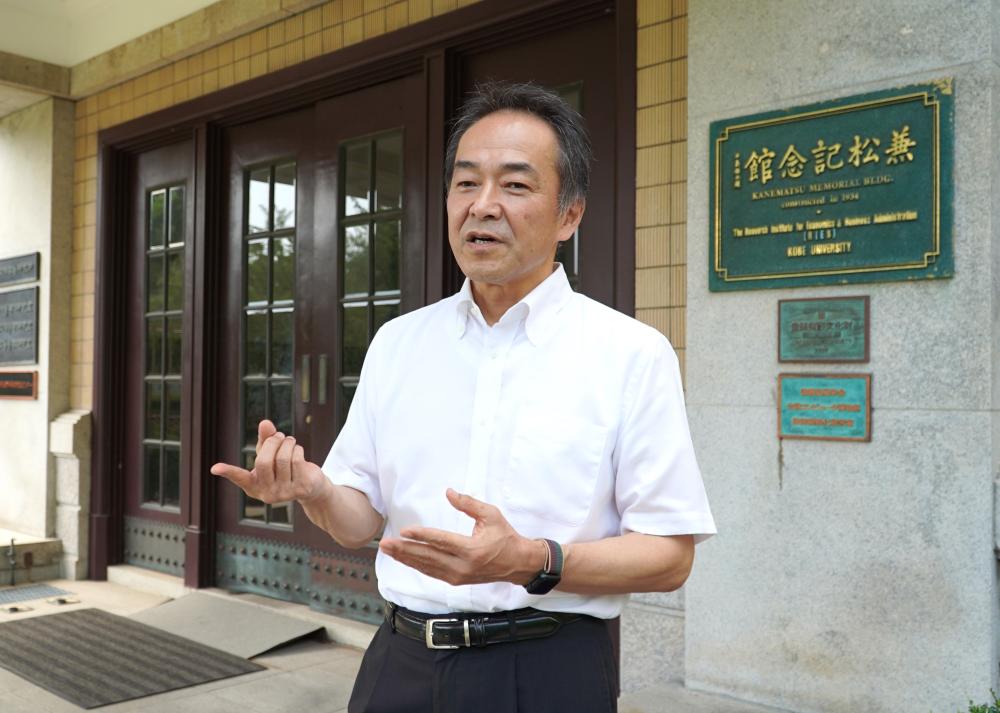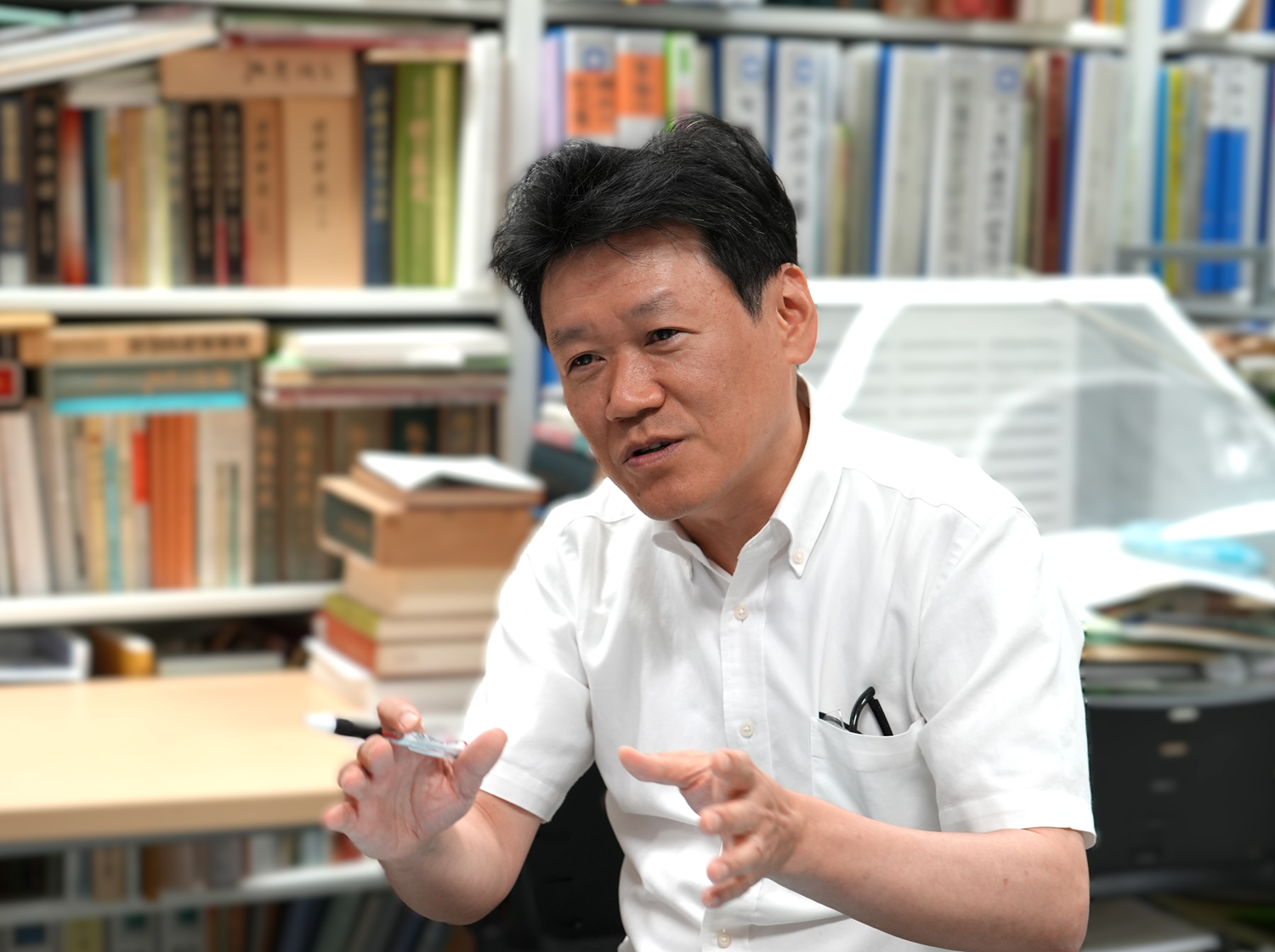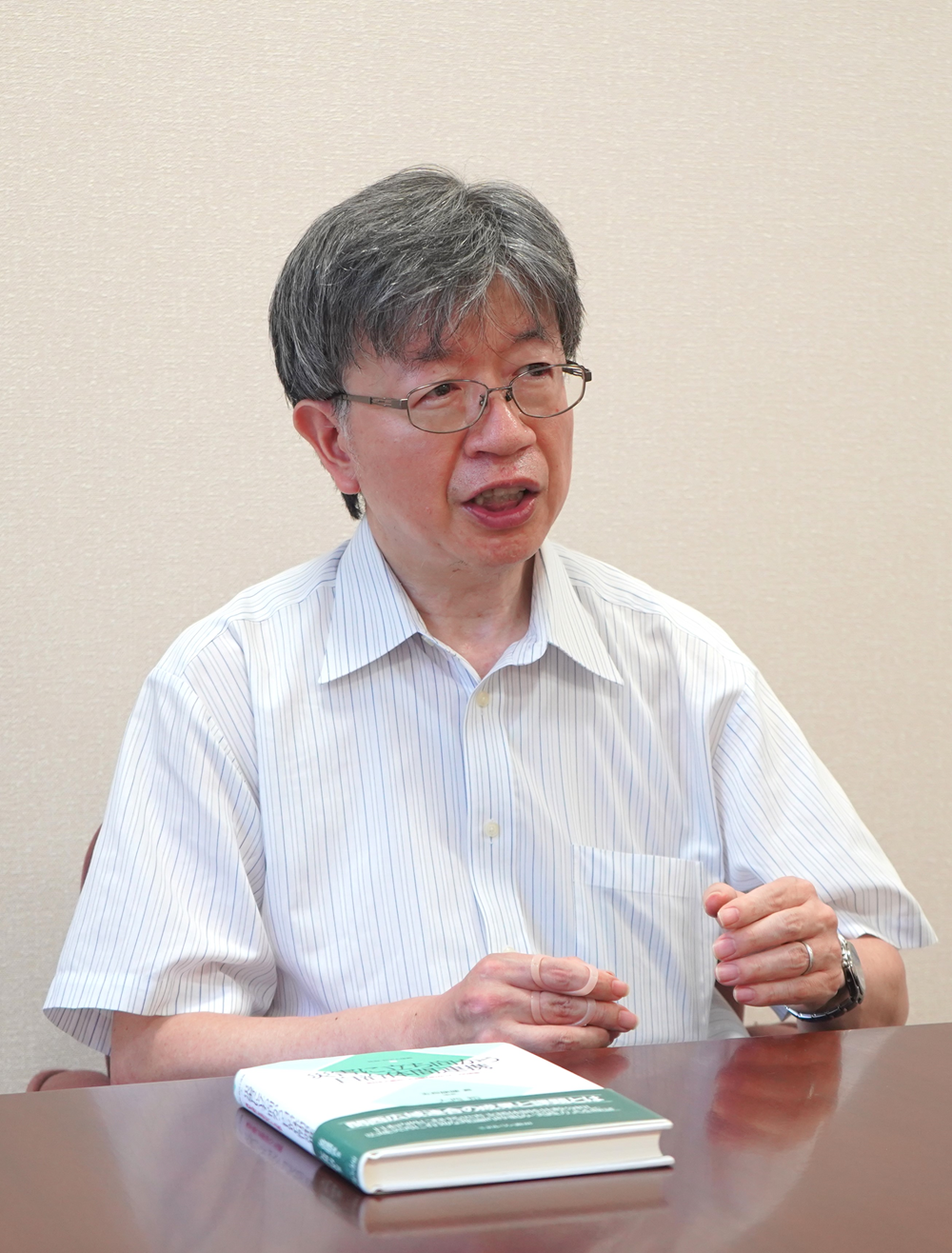
Following the Great East Japan Earthquake, the Union of Kansai Governments, a special local public body that consists of municipalities from the Kansai region, served an important role in supporting disaster-stricken municipalities in the Tohoku region. The union introduced a “counterpart” method for providing support, which pairs a municipality affected by a disaster with one that will provide support in recovery efforts, a method that has also been utilized in subsequent disasters. We spoke with Professor ONISHI Yutaka of the Graduate School of Law about the current state of and issues facing inter-municipal support as well as future prospects for this type of support in the event of a Nankai Trough earthquake.
What led you to perform research on inter-municipal support during times of disaster?
Onishi:
Following the Great East Japan Earthquake in 2011, Kobe University Professor Emeritus IOKIBE Makoto, who was to serve as director of the Hyogo Earthquake Memorial 21st Century Research Institute from the following year, had expressed that “the role that the Union of Kansai Governments served in the reconstruction process in east Japan should be recorded in detail and analyzed from the perspective of social sciences,” to which I received a request to perform a survey as part of a research project at the institute.
Formed in 2010, the year before the Great East Japan Earthquake, the Union of Kansai Governments was the first special local public body to reach beyond prefectural boundaries. Originally consisting of Osaka, Hyogo, Kyoto, Shiga, Wakayama, Tottori, and Tokushima prefectures, it now also includes Nara prefecture as well as the cities of Osaka, Sakai, Kyoto, and Kobe.
The survey was conducted as a research project within the institute. In 2017, I compiled discussions held in the project into a book entitled “Cooperation between municipalities in the face of disaster – The reality of cooperative governance as seen in the Great East Japan Earthquake.”
While performing my research, I also learned about the inter-municipal framework that had progressed following the Great Hanshin-Awaji Earthquake. After the earthquake, many municipalities offered their support to those affected by the disaster, but as the scheme for receiving this support was still undeveloped, there were situations in which affected municipalities were forced to refuse support. It was then that the importance of inter-municipal cooperation was recognized, a realization that then led to the development of such an infrastructure in anticipation of a disaster.
A framework that provides support from afar is key
What is the significance of inter-municipal cooperation?
Onishi:
Generally, disaster-stricken municipalities must provide their own support for individuals affected by a given disaster, but in the case of large-scale disasters like the Great East Japan Earthquake, these municipalities lose many of their administrative functions, meaning there are situations in which they must rely on other municipalities for support. However, as the duties of the central government and prefectural governments differ from those at the local level, those that can be enlisted to provide support to disaster-stricken cities, towns, and villages are other cities, town, and villages. These local municipalities take on a variety of duties, such as operating shelters and issuing disaster victim certificates.
Additionally, NPOs and volunteer organizations serve important roles in material and personnel support, both of which require coordination from municipalities. Supporting municipalities are of great help in these situations as well.
During the Great East Japan Earthquake, did previously made agreements between municipalities serve their function?
Onishi:
While there were cases in which municipalities entered into mutual support agreements based on existing relationships, such as agreements between sister cities, many were between neighboring municipalities. Since the effects of the Great East Japan Earthquake were felt over a wide area, these neighboring municipalities weren’t able to support each other. As a result, support from the distant Union of Kansai Governments played an essential role.
Just after the Great East Japan Earthquake, the Union of Kansai Governments finalized support for affected regions under the powerful leadership of then-governor of Hyogo Prefecture IDO Toshizo. By employing an autonomous support method in which a supporting municipality was paired 1-to-1 with a municipality affected by the disaster in the so-called “counterpart method,” they were able to effectively carry out their duties.
The concept of counterpart support actually goes back to the 1999 Jiji Earthquake in Taiwan. When the earthquake struck, Taipei City learned from the challenges faced during the Great Hanshin-Awaji Earthquake, providing support for affected municipalities via the counterpart method. The effects of this support became widely-known, and when the Sichuan Earthquake struck China in 2008, the Chinese government used the same method to pair municipalities affected by the earthquake with support municipalities to provide support for disaster-stricken areas. Hyogo Prefecture also provided support following the Sichuan Earthquake, later making use of the knowledge gained then during support efforts following the Great East Japan Earthquake. In other words, the lessons learned during the Great Hanshin-Awaji Earthquake eventually made their way back around and were put to use during the Great East Japan Earthquake.
Creating a framework that is mindful of collaboration with private organizations

What are some of the issues facing the counterpart method?
Onishi:
Since support for those affected by disasters involves support from various NGOs, NPOs, and volunteer organizations, municipalities must step in to coordinate support amongst these organizations; however, the methods for doing so require some consideration. Additionally, when multiple municipalities provide support to just one disaster-stricken municipality, assigning duties among supporters requires some consideration as well. While it would be ideal if one of them would take the initiative to coordinate activities at the disaster site, of the cases I’ve heard about thus far, things don’t necessarily function as one would expect.
What kind of response should be considered during future disasters, such as a Nankai Trough earthquake?
Onishi:
In the aftermath of the Great East Japan Earthquake, the arrangement in which municipalities in Kansai provided support to disaster-stricken municipalities in the Tohoku region functioned because the municipalities in Kansai had the requisite manpower. However, in the event of a Nankai Trough earthquake, it is anticipated that a major economic artery, one that includes the Kansai area, would suffer significant damage, raising the question of just how thorough support from places like the Tohoku region would be.
Support solely between municipalities would prove difficult, meaning that recovery would also require support from the private sector. Thus, we must create a scheme that utilizes the strengths of the private sector and translates those strengths into support for affected areas. Private organizations do not mobilize in response to orders from government offices; rather, they provide support that they themselves feel is necessary, so the question remains as to how municipalities would be able to function as merely a coordinator in this type of situation.
When the Great East Japan Earthquake struck, quite a few personnel with direct experience during the Great Hanshin-Awaji Earthquake were still working in Hyogo Prefecture and Kobe City. Since then, however, it’s possible that those number have dropped, resulting in less experience available to draw from at those organizations. We may need to develop a cross-sectional framework that goes beyond the border of municipalities to share knowledge gained through support both during and following the Great East Japan Earthquake.
Hyogo Earthquake Memorial 21st Century Research Institute strives to nurture the human resources that form the core of disaster response in local municipalities by offering courses to staff members from all over Japan. I think that we should expand this type of initiative to other organizations.
Resume
Graduated from the Kyoto University Faculty of Law in 1989. Completed the master’s program at the Kyoto University Graduate School of Law in 1991, later receiving his doctorate in law. Became an assistant and assistant professor at Osaka City University, before becoming a visiting professor at Korea University in South Korea, and professor at Kobe University Graduate School of Law in 2005. Previous positions include president of the Japanese Political Science Association.





